Soleirolia: what it looks like, features of the species and rules of care
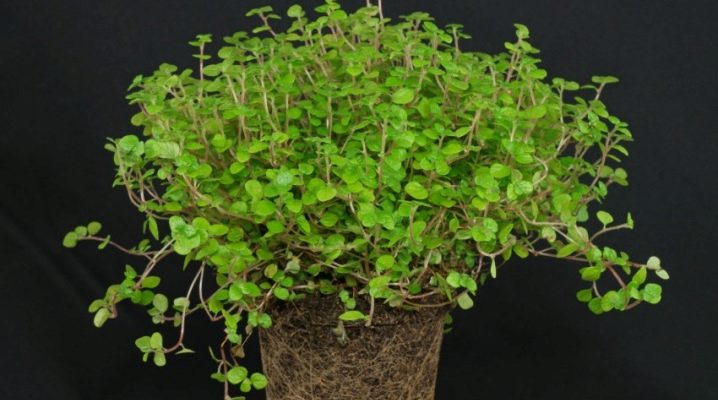
A rare florist will be able to resist the exquisite beauty of saltérolia or gelksina. It fits perfectly into any interior, goes well with tall plants, creates a positive atmosphere in the house, and reduces the level of electromagnetic radiation. Ease of care allows even inexperienced housewives to cultivate it. Let's take a closer look at this plant.
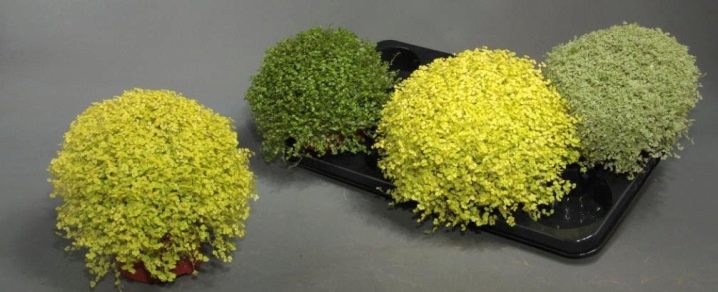
Description
More than 100 years ago, the English navigator Soleirol discovered an unknown plant on the islands of Corsica and Sardinia, later named after him. In its natural habitat, it is a low-growing shrub that covers the ground.... Grows under the shade of a tree or on mountain slopes.
Botanists have classified saltyrolia: the nettle family, the genus Soleirolia, the species Soleirolia soleirolii, which is the only one. Scientists have developed several varieties of gelxin:
- Argentea;
- Green;
- Variegata;
- Aurea.
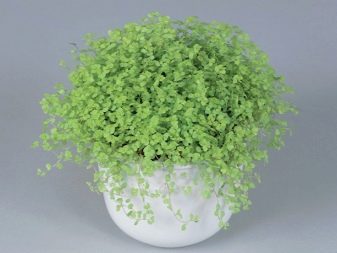
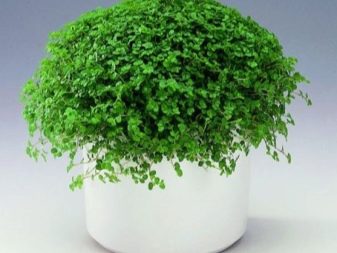

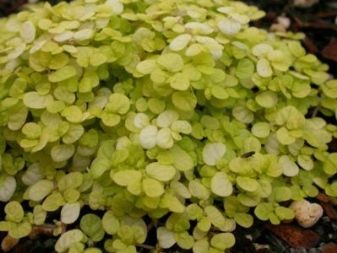
Soleirolia is a short plant that covers the ground. It has leaves of an elongated shape of the color of young green foliage, up to 0.5 cm in diameter and they are located in pairs. Fragile and thin stems do not exceed 20 cm.
Shoots can branch with a lack of light.
Florists select original places for the growth of saltium: a terrarium, a bottle garden, a hanging flowerpot, in pots with tall flowers. Neighborhood with low plants is undesirable, since salt will destroy the plants.
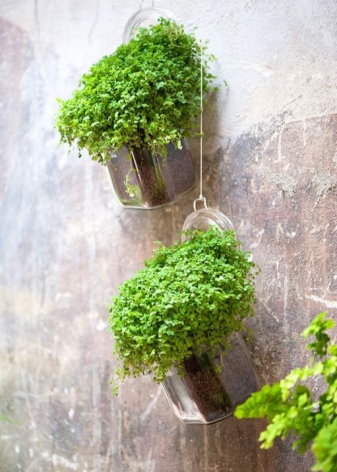
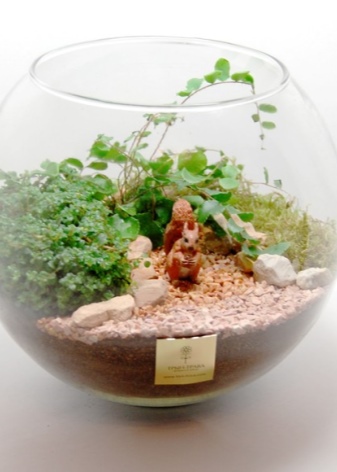
Gelksina perfectly cleans the air, does not produce toxic substances, so it can be placed in a children's room.
Bloom
In an apartment, saltwort blooms very rarely and never bears fruit. In natural conditions, its flowers are small, whitish, faded, after which reddish berries are formed, which contain seeds.
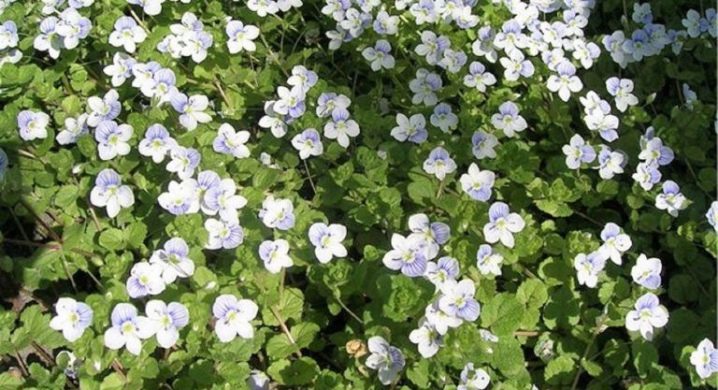
Microclimate
Gelksina is a thermophilic plant, the optimum growth temperature is approximately + 18.25 ° C. In summer, it is allowed to take it out to the balcony, and in winter it must be protected from gusts of wind and hypothermia. Create diffused light for the flower, use artificial lighting on cloudy days. Successful growth directly depends on the conditions of detention, so adhere to several rules:
- the soil substrate should contain pebbles, sand, turf;
- spray your pet in the morning and evening, drain excess liquid after watering;
- feed the plant with mineral fertilizers once every 14 days, and in the cold season, once every 30 days;
- reproduction of saline occurs in a vegetative way.
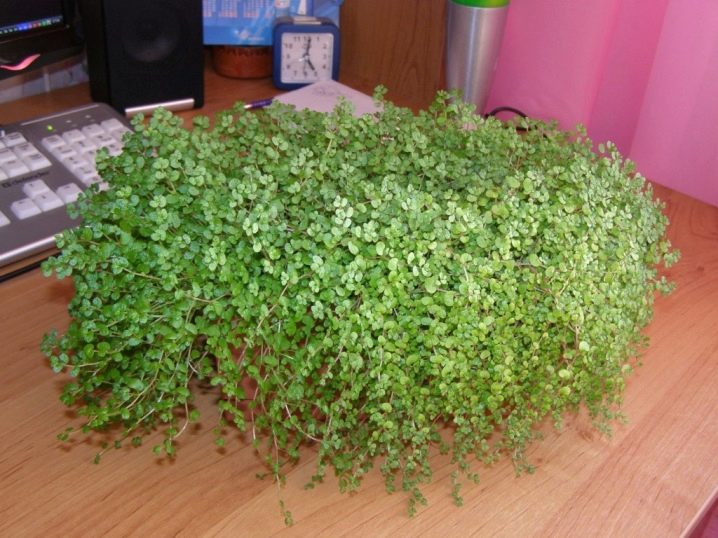
Usage
With the help of gelksina, you will create coziness in any room. It looks great both on its own and in combination with tall plants. Used to hide soil. Choose a neighbor so that the conditions for leaving are approximately the same.
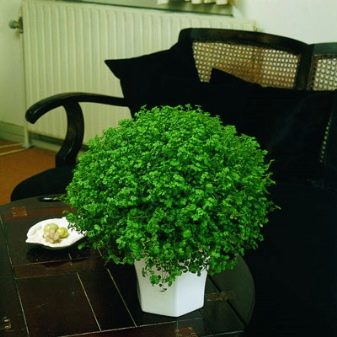
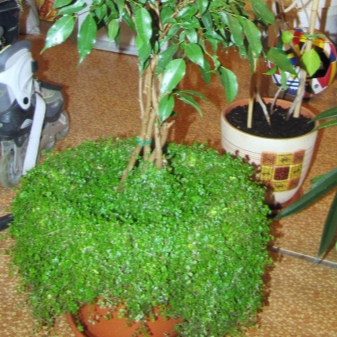
On a personal plot, using various varieties of gelksina, they create openwork patterns of any complexity. This shrub will braid any support you give it, so you can make living figurines from it.
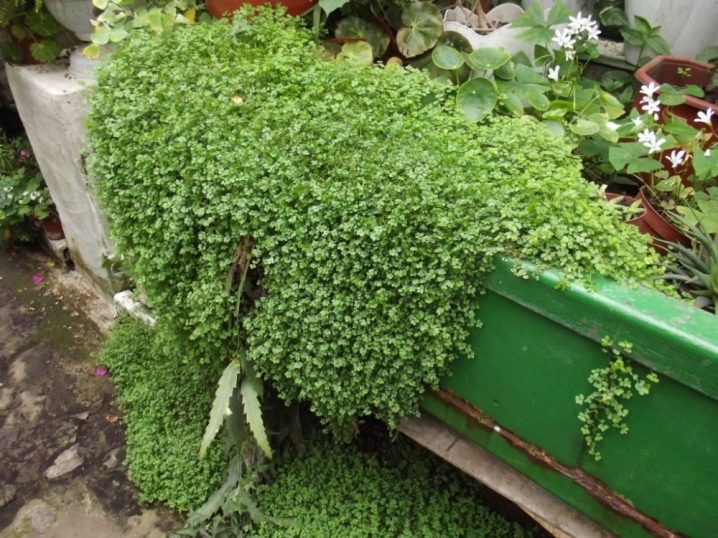
Salleurolium is also well suited for the decoration of aquariums and terrariums. But it shouldn't be in the water. Place the plant on a dedicated pedestal.
The smallest varieties can be grown in bottle gardens. This will be an original gift for any housewife.
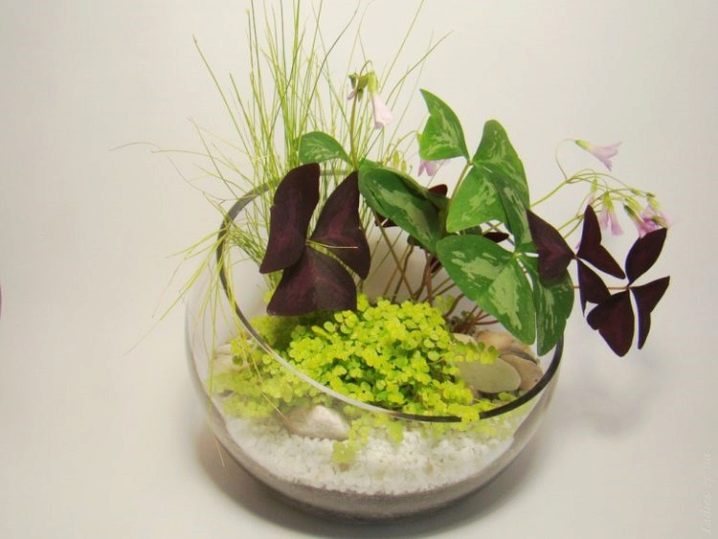
Superstition
Many flower growers are sure that gelksina brings joy, harmony, and a positive mood to the house. When caring for a pet, a person gets rid of anxiety, nervous tension and even depression.
Solleyrolia is recommended to be installed in the nursery, as it promotes sound sleep.... According to the teachings of Feng Shui, it is not recommended to install it in the bedroom of the spouses, as this will lead to a deterioration in the relationship between them. Her presence in the living room is also undesirable.
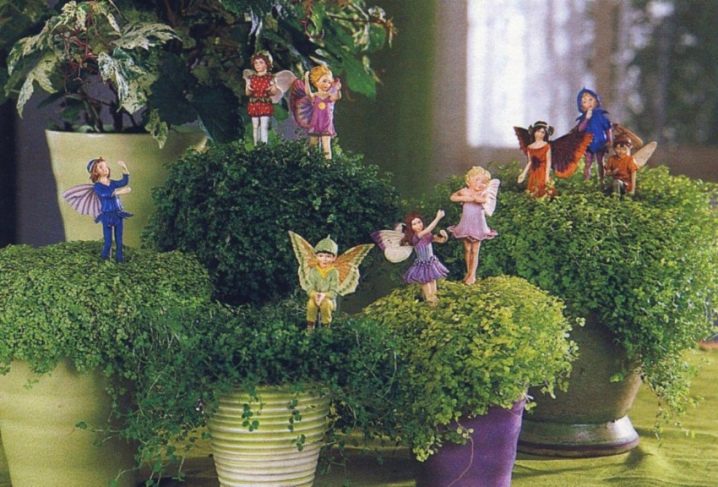
Place the flower in the niches of the cupboards, so positive energy accumulates there that can fill the entire space of the room. The optimal neighborhood is a TV or a computer, which is explained by the ability of gelksin to reduce electromagnetic radiation.
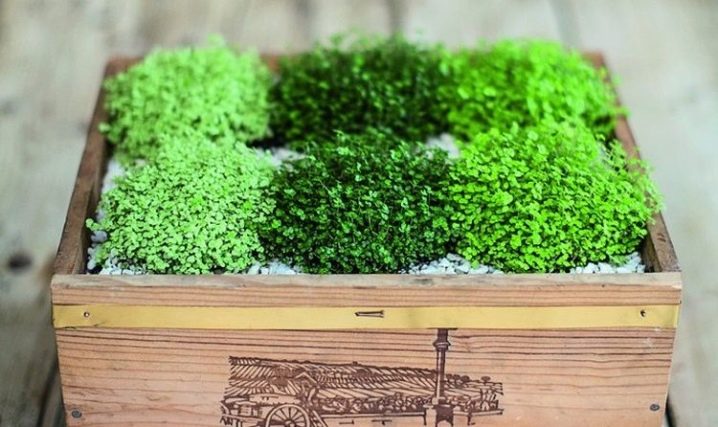
Types and varieties
As mentioned above, saline has one type and 4 varieties. Let's take a closer look on each of them.
- The species Soleirolia soleirolii the leaves have a glossy surface with a rich green color.
- Peculiarity Argentea - this is the presence of a silvery leaf color.
- Green is a miniature variety, 20 cm wide. Its small leaves are painted in a pale green color.
- By the green Variegata there is a thin snow-white border.
- Aurea differs in golden tint of foliage.
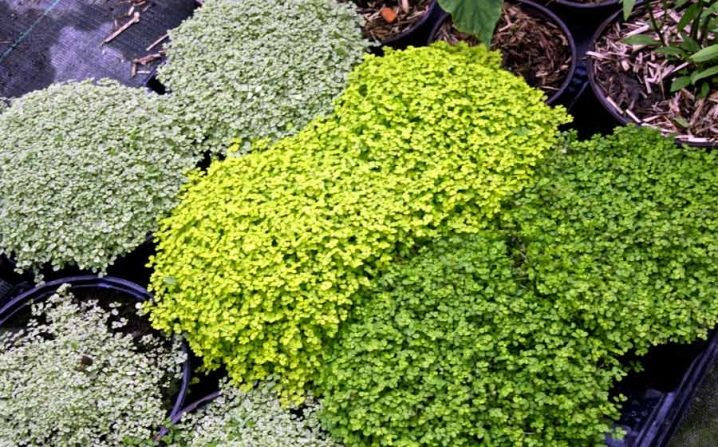
All varietal differences are visible only in bright sunlight. In flower shops, "Soleirolia Green" is popular, as well as "Soleirolia Mix" from several varieties.
Landing
The first flower transplant is carried out 2 weeks after purchase. Then, as the plant grows. It is best if the planting takes place during the spring season. In case of excessive growth, the bush can be divided into several parts, or simply choose a larger pot. The roots of saltium are very thin and easily torn, therefore, the transplant is carried out by the method of passing an earthen coma.
It is best to prepare the flower substrate yourself. To do this, you will need:
- turf and greenhouse land;
- peat;
- sand;
- pebbles.


Make sure the pot has holes to drain the water.
Put a drainage consisting of expanded clay or small pebbles on its bottom. Fill the pot with ¼ of soil, place the plant and sprinkle gently with earth. Place the transplanted helxin in a cool room with diffused light.
Care
Solleyrolia does not require special care at home. Find the optimal place for it, periodically water and spray. Below we will consider the basic principles of cultivation.
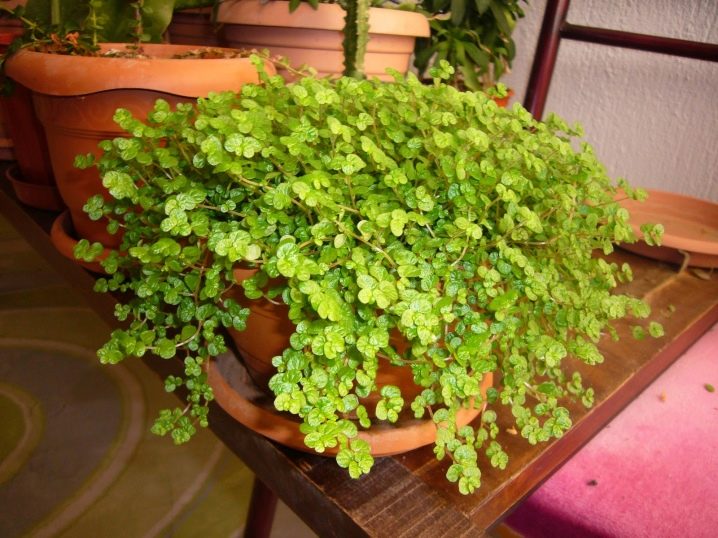
Lighting
Under natural conditions, helxina grows in the shade of trees, so it is used to bright sunlight scattered by foliage. Place the flower in the room out of direct sunlight. The duration of daylight hours is about 12-16 hours, so additional lighting is needed in winter, otherwise the stems lengthen and the whole view is lost.
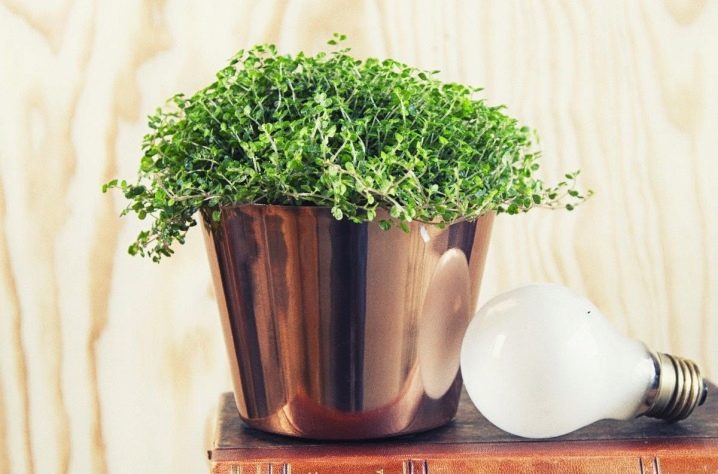
Temperature
Soleirolia feels good in the range from +18 to + 25 ° C. On hot days, additional watering is required. In winter, the temperature can reach + 8 ° C, it is necessary to ensure that there are no frosts and drafts.
Humidity
This plant is moisture-loving. Don't be afraid to over-humidify the air in the room. Frequent irrigation and bathing promotes the formation of deep green foliage. If you have an aquarium in your house, then this is a good neighborhood for gelksina. For irrigation, use purified water that has been settled for several days. At + 20 ° C, humidification is reduced, and at lower temperatures, it stops altogether. Do not place your pet in damp and cold rooms, as this provokes leaf rot.
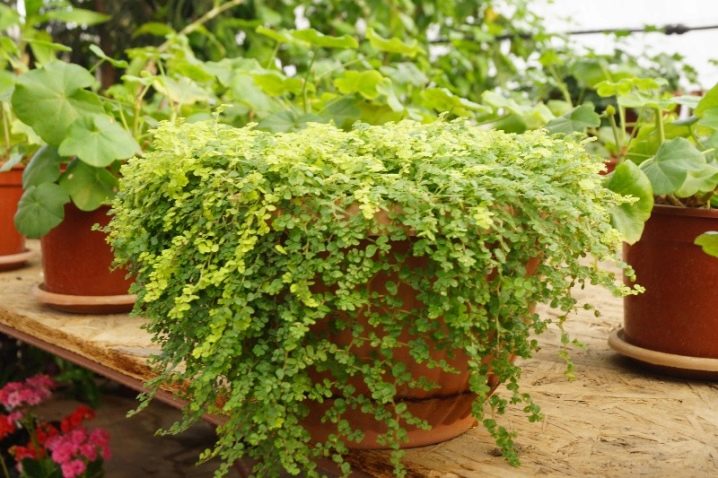
Watering
In the spring-summer period, saline needs abundant watering. To do this, use well-purified water at room temperature that has been previously settled for 12 hours. Watering should be daily. Drain excess liquid from the pan after 10 minutes, so you protect the roots from decay. In the autumn-winter period, the amount of water is reduced so that the substrate dries out by?.
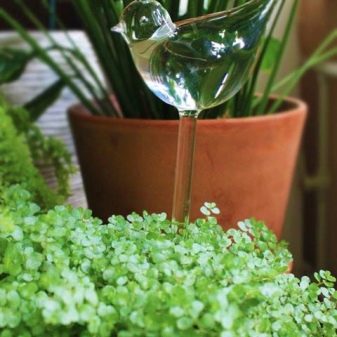
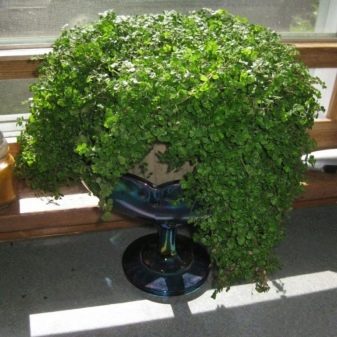
Fertilizers
It is necessary to introduce complementary foods all year round, because gelksina does not need periods of rest.Mineral fertilizers are dissolved in water, after which the plant is watered. In spring and summer, additional microelements are required approximately 2 times a month, in winter, once is sufficient.
During wintering at a temperature of + 10 ° C, fertilizers are not applied.
Pruning
In case of insufficient lighting, the stems of saltyrolia become bare and depleted, therefore, periodic pruning of shoots is necessary. It is held annually in spring. Up to half of the old shoots are removed. This allows the plant to rejuvenate and accelerate its growth. Pruning the branches is also necessary to give the plant an unusual shape.

Breeding features
Soleirolia propagates by grafting or dividing the bush. In the natural environment - by seeds. Vegetative propagation allows you to preserve the varietal characteristics of the plant.
When grafting, cut off a young shoot so that 2-3 internodes remain on it, and root it. To do this, place the shoots in a glass of water for several weeks. As soon as the root system appears, plant it in the ground. Alternatively, immediately place the cuttings in moist soil, then they will root in about 10-21 days.
The second way will be the rooting of the shoot, which does not separate from the mother. To do this, drop one or more shoots in the middle. In this case, the formation of the root system will occur faster. After that, the shoot is cut off from the main bush and transplanted into a new wide and shallow pot. Plant several specimens together to form a tight hat.

If your pet has outgrown its capacity, then it is worth replanting it. This is a good time to propagate helxin. Just carefully divide the bush into several pieces and place each in its own pot.
You can order saltium seeds on the Internet. They are much cheaper than adult plants, but you need to know the nuances of planting them:
- take a wide and shallow pot;
- put a small layer of expanded clay on the bottom and cover with peat;
- then sprinkle the seeds on the surface of the substrate, do not deepen or sprinkle them;
- close the container tightly with foil;
- airing and spraying daily, and in 1-2 weeks you will see the first shoots;
- then transplant the seedlings into separate pots.
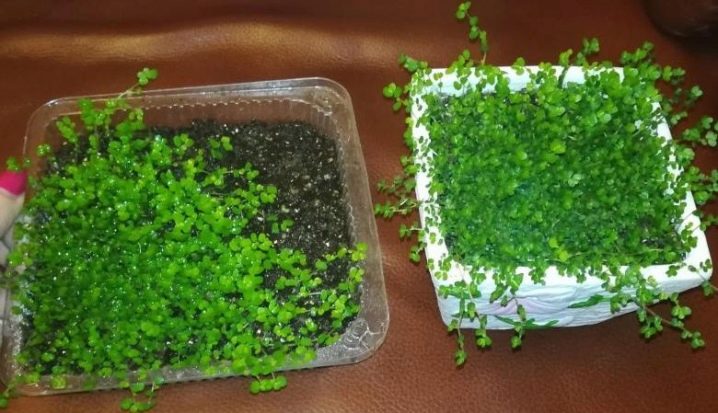
Diseases and pests
The most common disease of saltium is fungal infection. Brown and soft shoots become symptoms. The disease progresses with insufficient lighting, low air temperatures, and excessive watering. If your flower shows signs of fungal infection, then it must be urgently transplanted into a new pot. To do this, carefully remove the plant without damaging the roots. Get rid of all sick and suspicious twigs, treat the remaining bush with fungicides, after which you can plant it in a new place.
When ash and brown spots appear on the stems of helxin, carefully assess the humidity in the room - most likely, it is excessive. Remove damaged parts of the plant, ventilate more often. Watering should be ascending, reduce the number of sprays to one or two times a day.
Among pests, saltyrolia is most often affected by: aphids, spider mites, mealybugs and whiteflies. It is worth remembering that if there is an affected flower nearby, then gelksina is also affected. It is not always easy to suspect pests. They are very small and hide behind the dense crown of your pet. Examine the plant when watering and irrigating. If you find twisted leaves, a small cobweb, damaged shoots, then, most likely, parasites have started.
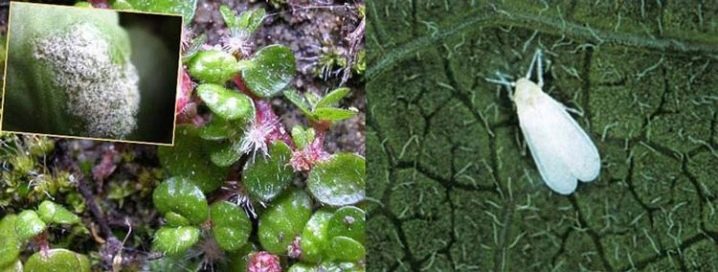
First of all, move the salt solution to another room, isolating it from other indoor flowers. Then rinse the crown under running warm water and soap. The land must be closed from an excess of moisture or the excess must be carefully drained. Very often, such measures do not help in the fight against the pest. If after a few days you find pests again, then use industrial insecticides:
- Fitoverm;
- Aktofit;
- Intavir;
- Aktara;
- Vermitek.
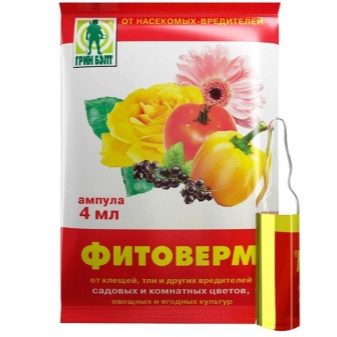
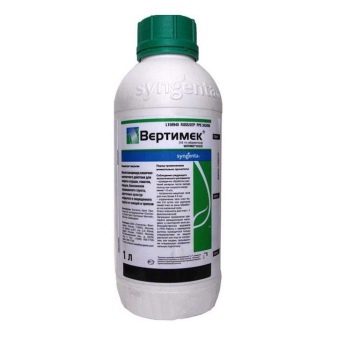
To process flowers with these chemicals, you must adhere to several rules:
- carry out insecticide treatment in a well-ventilated area;
- work in protective equipment - mask, gloves, apron;
- after the end of the procedure, leave the flower for 10 minutes and ventilate the room, wash your hands thoroughly;
- you can not spray the plant within 24 hours after treatment;
- keep children and pets away from the plant for three days.
In order to protect salineurol from the attack of pests, preventive measures are needed:
- inspect the flower garden regularly;
- ventilate the room;
- follow the recommendations for temperature and humidity;
- spray the plant with water several times a day.
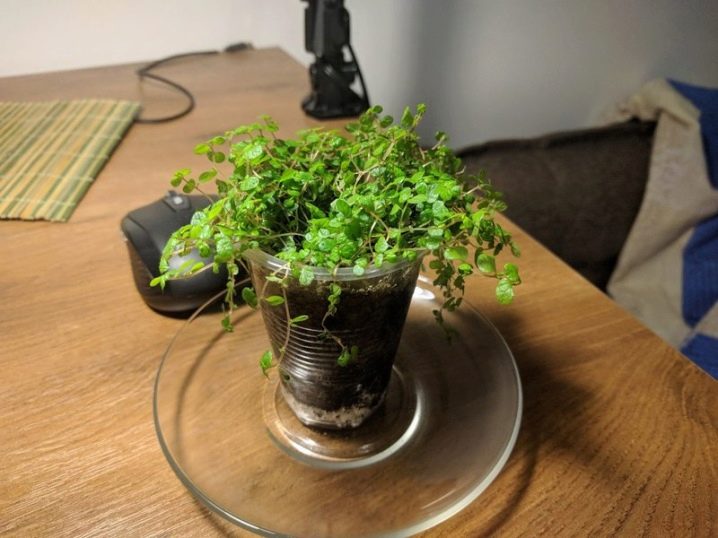
Soleyrolia is a very delicate and beautiful flower that will perfectly fit into any interior. Thanks to it, your children can become calmer and their sleep better. Gelksina will remove excess electromagnetic radiation and create a positive atmosphere in the room.
How to care for the salt is described in the next video.























The comment was sent successfully.